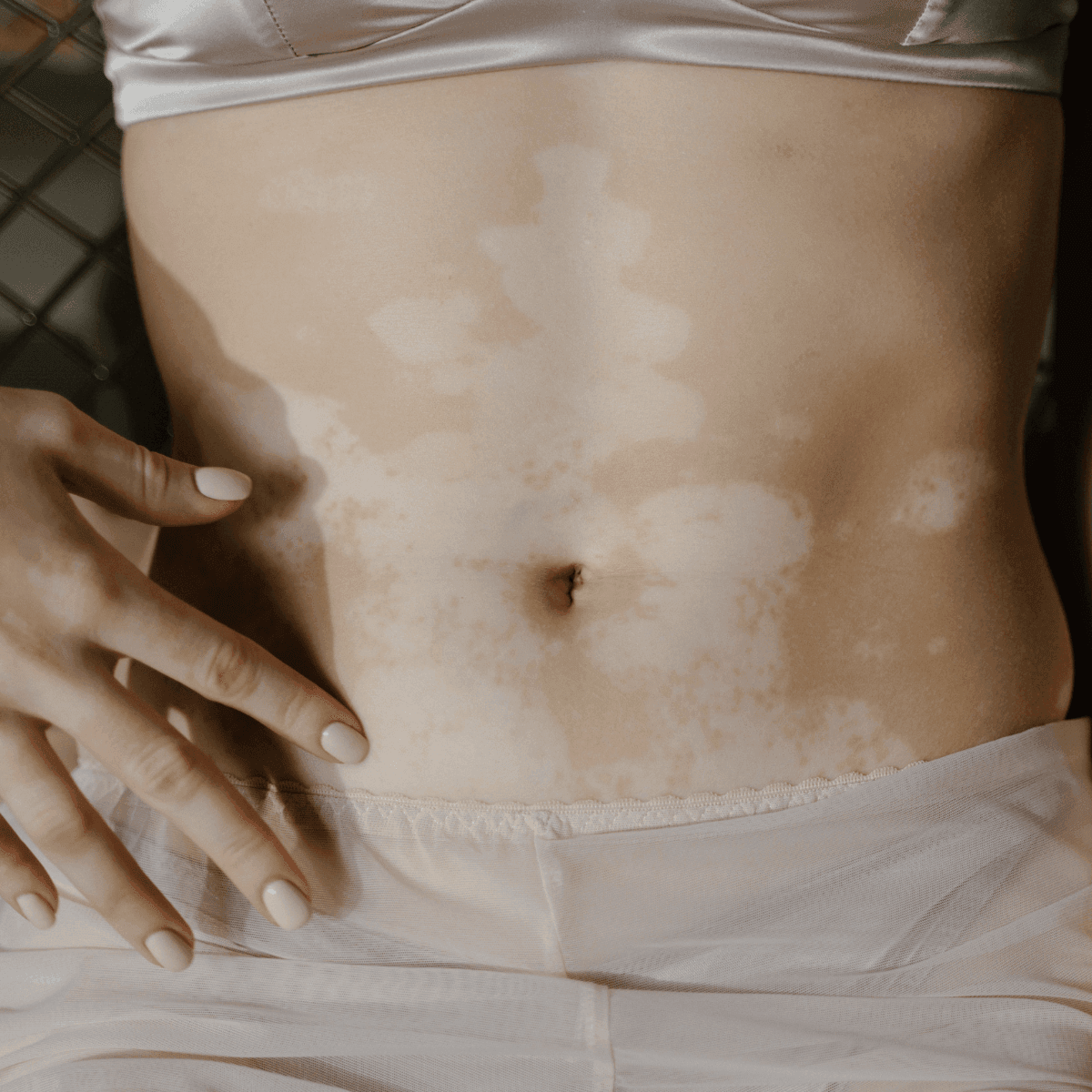Skin is like a canvas, each person’s unique and beautiful in its own way. But what happens when parts of that canvas lose their color, creating lighter patches that seem out of place? This phenomenon, called hypopigmentation, can leave you feeling puzzled and searching for solutions. In this article, we’ll break down what hypopigmentation is, how it differs from hyperpigmentation, and explore the treatments available to help you find your glow again.
Contents
What Is Hypopigmentation?
Let’s start with the basics: hypopigmentation is when your skin loses melanin, the pigment that gives it color. This results in lighter patches that stand out against your natural tone. Think of it like someone accidentally erasing parts of your skin’s artwork.
Hypopigmentation can have many causes. Sometimes, it’s the result of skin trauma, like burns, cuts, or even acne scars. It can also stem from certain medical conditions like vitiligo, which causes distinct, pale patches, or albinism, a genetic condition where melanin production is minimal or absent altogether. Even something as simple as a fungal infection, like tinea versicolor, can lead to hypopigmentation.
Other times, it’s post-inflammatory hypopigmentation, which shows up after skin inflammation from conditions like eczema, psoriasis, or even bug bites. The good news? Not all hypopigmentation is permanent – some cases resolve on their own over time.

How Does It Differ from Hyperpigmentation?
If hypopigmentation is the loss of color, hyperpigmentation is its overzealous twin, creating darker patches due to excess melanin production. They’re opposites, but they share one thing in common: they’re both caused by imbalances in melanin.
Here’s a quick breakdown to clear the confusion:
- Appearance: Hypopigmentation causes light spots, while hyperpigmentation results in dark spots.
- Causes: Hypopigmentation often follows trauma or medical conditions, while hyperpigmentation might be triggered by sun damage, hormonal changes (like melasma), or acne scars.
- Treatment: While hyperpigmentation treatments aim to reduce excess pigment, hypopigmentation treatments work to restore or camouflage lost color.
This distinction is key because what works for hyperpigmentation won’t necessarily help hypopigmentation – and could even make things worse. Diagnosis is crucial!
Is Hypopigmentation Treatable?
The million-dollar question: Can hypopigmentation be treated? The answer is: it depends. Some forms, like post-inflammatory hypopigmentation, can resolve on their own as your skin heals. Others, like vitiligo, require ongoing management.
Here’s the thing – melanin production is a complex process, and restoring it is no easy feat. That’s why patience is your best friend on this journey. While treatments can help, they might not completely restore your skin’s original tone. But with the right approach, improvement is often achievable, and confidence can be reclaimed.
What Treatments Are Available and Effective?
The world of skincare treatments can feel overwhelming, so let’s break it down. Here are the most common options for hypopigmentation:
Topical Treatments
Sometimes, the simplest solution is right on the surface. Steroid creams or calcineurin inhibitors can reduce inflammation in cases like post-inflammatory hypopigmentation. For blending lighter areas with the rest of your skin, skin-lightening creams might be used – but only under a dermatologist’s supervision.
Laser Therapy
Lasers aren’t just for sci-fi movies – they’re a powerful tool for skin restoration. Fractional lasers, for example, can stimulate melanin production in hypopigmented patches, encouraging your skin to “wake up” and produce pigment.
Phototherapy
If you have a condition like vitiligo, UV light treatments can work wonders. These involve exposing your skin to controlled doses of ultraviolet light to encourage repigmentation.
Cosmetic Solutions
For those seeking a quick fix, cosmetic camouflage is a lifesaver. Micropigmentation (a fancy term for tattooing) can fill in light patches with natural-looking pigment. For something less permanent, makeup and self-tanners can even out your complexion in minutes.
Natural Remedies and Lifestyle Changes
While they’re not a replacement for medical treatments, certain lifestyle tweaks can support your skin’s health. A diet rich in antioxidants and vitamins (like Vitamin C and E) can boost your skin’s natural repair processes. And let’s not forget sunscreen – hypopigmented skin is especially vulnerable to UV damage.

How to Choose the Right Treatment for You
Navigating the world of hypopigmentation treatments is like finding the perfect pair of jeans – what works for someone else might not fit you at all. Here’s how to make the best choice for your skin:
- Start with a Professional Diagnosis: Your first step should always be a visit to a dermatologist. They can identify the root cause of your hypopigmentation and guide you toward the most effective treatments.
- Consider the Cause: If your hypopigmentation is temporary (like post-inflammatory), you might not need intensive treatments. But for long-term conditions like vitiligo, a more targeted approach is necessary.
- Understand Your Skin Type: Certain treatments, like laser therapy, may not be suitable for all skin types. Your dermatologist will help you find options tailored to your unique needs.
- Factor in Your Lifestyle and Budget: Let’s be real – some treatments require a time commitment (looking at you, phototherapy) or a hefty price tag. Weigh your options carefully and choose what fits your lifestyle.
- Be Patient: Skin takes time to heal and respond to treatments. Consistency and realistic expectations are key to seeing progress.
Hypopigmentation can be a frustrating condition, but it’s important to remember that you’re not alone – and you have options. Whether it’s through medical treatments, cosmetic solutions, or simply embracing your skin’s unique story, there’s a path forward.
At the end of the day, the goal isn’t just about restoring color to your skin – it’s about restoring your confidence. With the right care, patience, and guidance from a trusted dermatologist, you can feel good in your skin again, no matter what.


